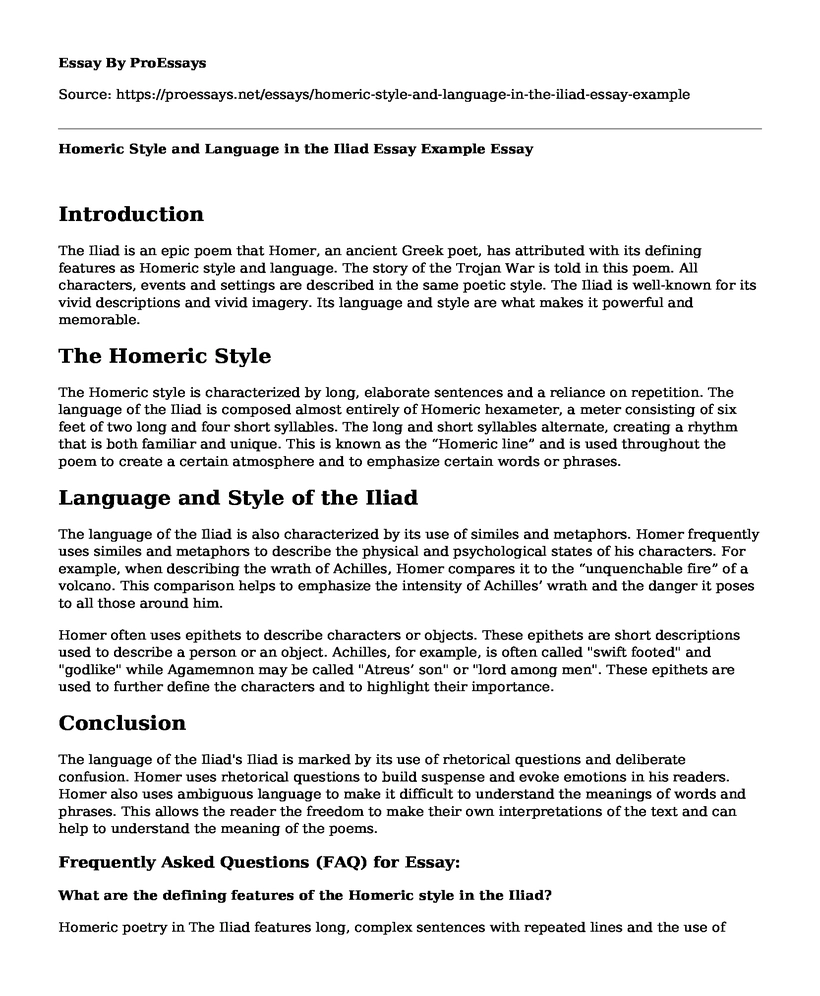Introduction
The Iliad is an epic poem that Homer, an ancient Greek poet, has attributed with its defining features as Homeric style and language. The story of the Trojan War is told in this poem. All characters, events and settings are described in the same poetic style. The Iliad is well-known for its vivid descriptions and vivid imagery. Its language and style are what makes it powerful and memorable.
The Homeric Style
The Homeric style is characterized by long, elaborate sentences and a reliance on repetition. The language of the Iliad is composed almost entirely of Homeric hexameter, a meter consisting of six feet of two long and four short syllables. The long and short syllables alternate, creating a rhythm that is both familiar and unique. This is known as the “Homeric line” and is used throughout the poem to create a certain atmosphere and to emphasize certain words or phrases.
Language and Style of the Iliad
The language of the Iliad is also characterized by its use of similes and metaphors. Homer frequently uses similes and metaphors to describe the physical and psychological states of his characters. For example, when describing the wrath of Achilles, Homer compares it to the “unquenchable fire” of a volcano. This comparison helps to emphasize the intensity of Achilles’ wrath and the danger it poses to all those around him.
Homer often uses epithets to describe characters or objects. These epithets are short descriptions used to describe a person or an object. Achilles, for example, is often called "swift footed" and "godlike" while Agamemnon may be called "Atreus’ son" or "lord among men". These epithets are used to further define the characters and to highlight their importance.
Conclusion
The language of the Iliad's Iliad is marked by its use of rhetorical questions and deliberate confusion. Homer uses rhetorical questions to build suspense and evoke emotions in his readers. Homer also uses ambiguous language to make it difficult to understand the meanings of words and phrases. This allows the reader the freedom to make their own interpretations of the text and can help to understand the meaning of the poems.
Cite this page
Homeric Style and Language in the Iliad Essay Example. (2022, Dec 16). Retrieved from https://proessays.net/essays/homeric-style-and-language-in-the-iliad-essay-example
If you are the original author of this essay and no longer wish to have it published on the ProEssays website, please click below to request its removal:
- Essay Sample on Dramatic Irony
- Critical Essay on Flashbacks in the Death of a Salesman by Arthur Miller
- Essay Example on Immigrants' Struggle With a Different Culture: Padel and Nagra's Poems
- Reflection on the Movie 12 Angry Men
- Victor Frankenstein Is the True Monster Essay
- Agamemnon & Achilles: Epic Heroes in Homer's Iliad - Essay Sample
- Machiavelli's 'The Prince' - Essay Sample







